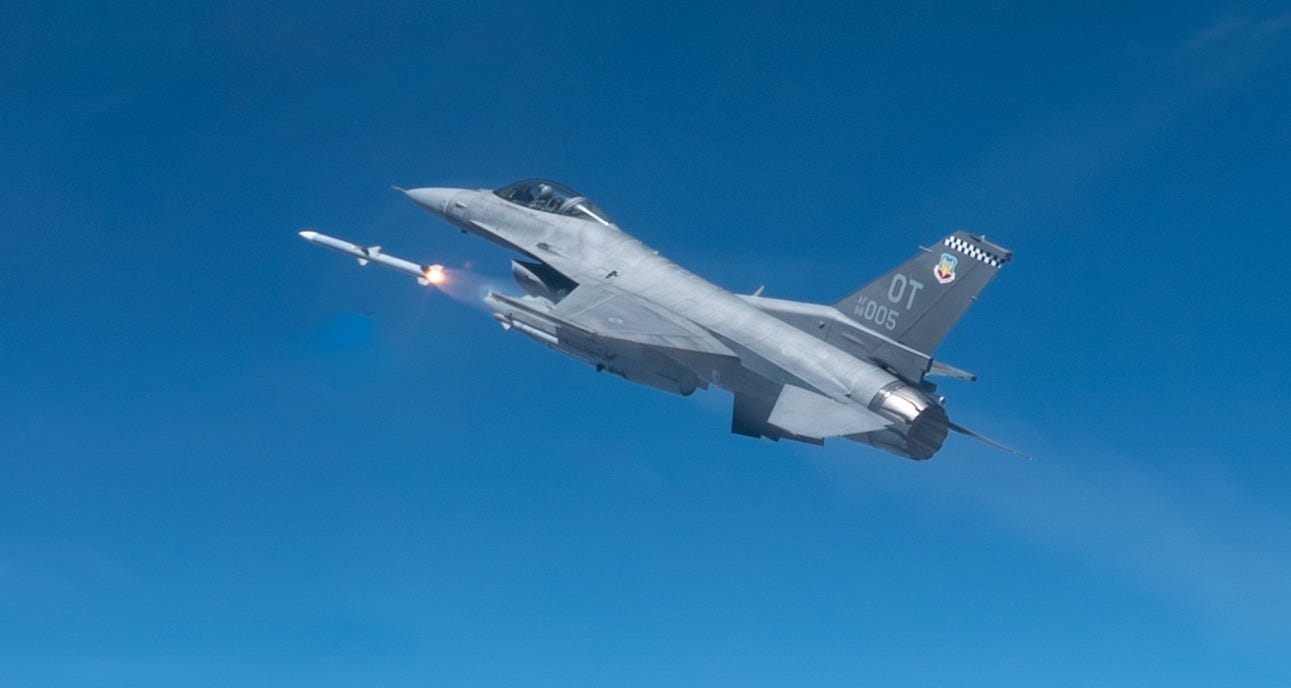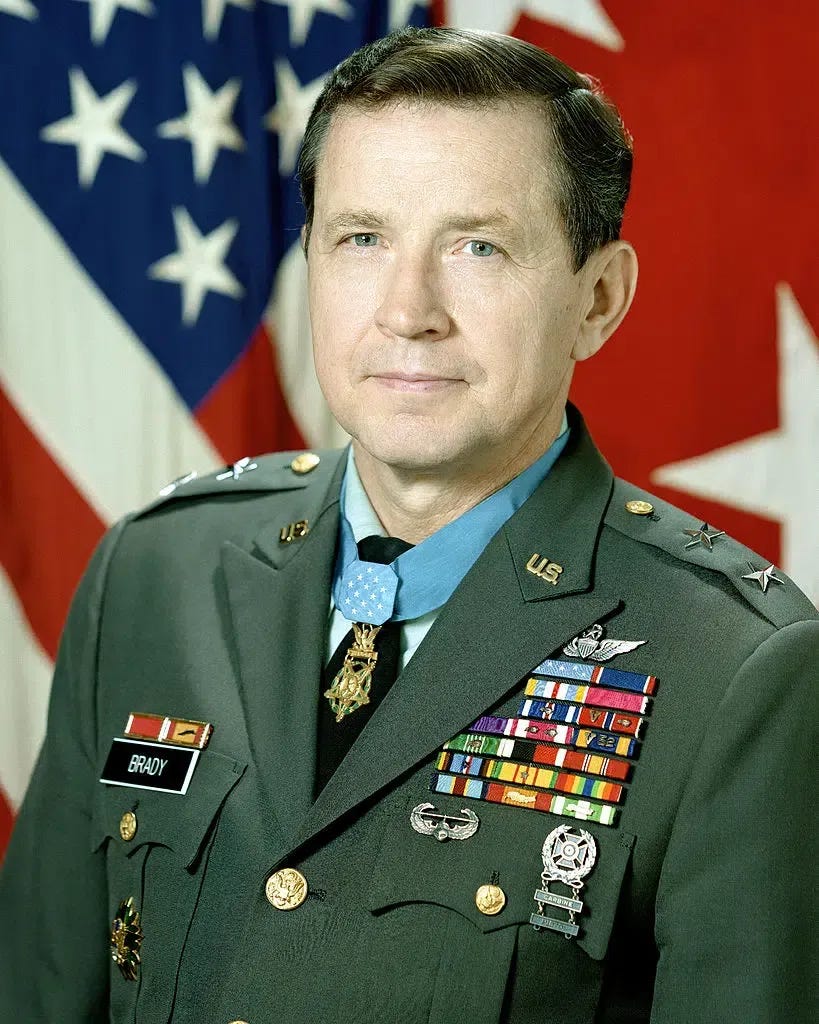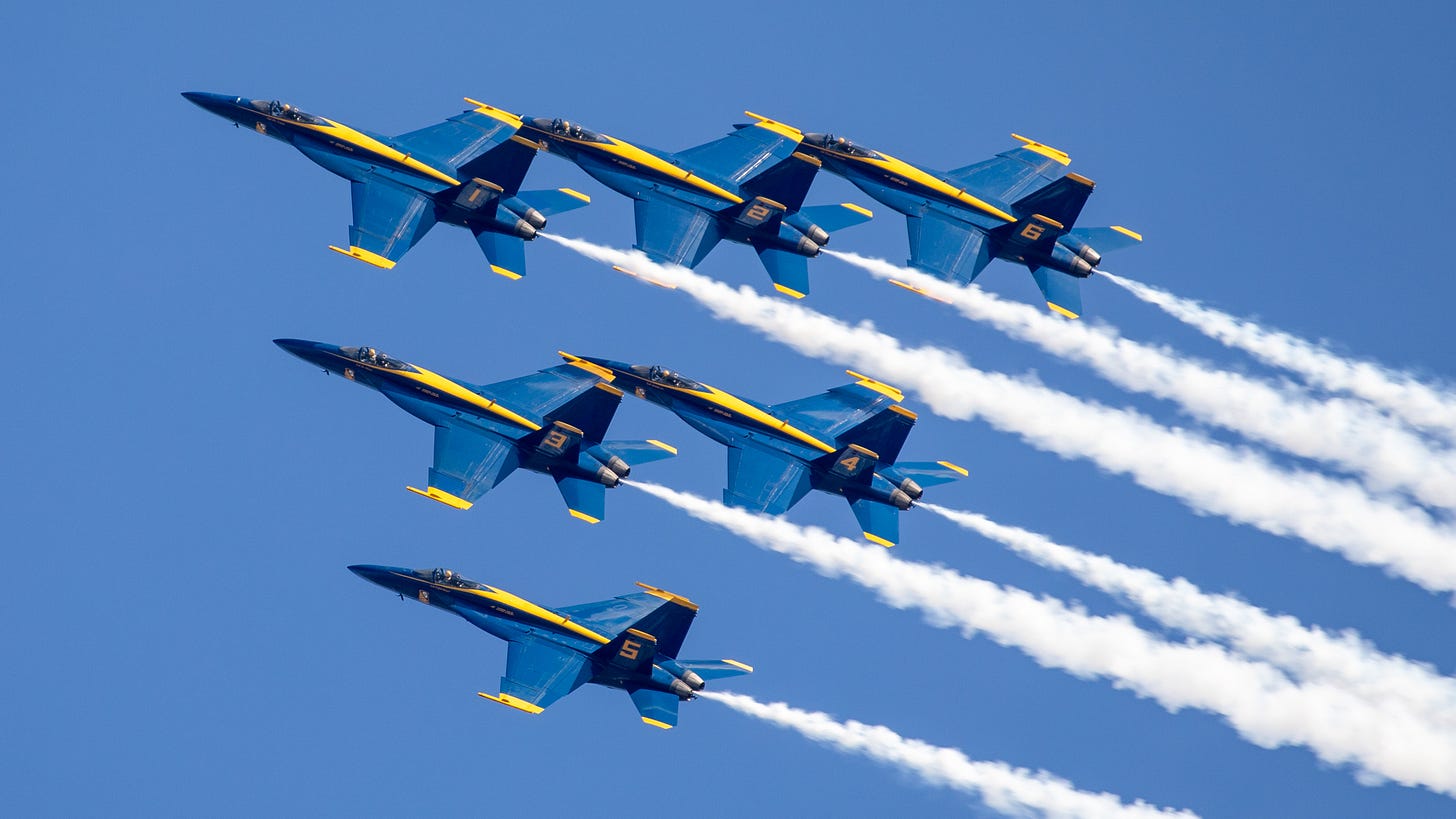Japan to get AMRAAMs and looking back at a heroic Huey pilot
Up to 1,200 AIM-120s for Japan and remembering an exceptional UH-1 pilot
"Fighter pilots have ice in their veins. They don’t have emotions. They think, anticipate. They know it’s not about guts and glory. It’s about staying alive."
— Brigadier General Robin Olds, U.S. Air Force fighter ace.
Mission Briefing:
Japan Secures $3.64 Billion AMRAAM Missile Deal to Strengthen Regional Defense
The U.S. State Department has approved a significant Foreign Military Sale to Japan, encompassing up to 1,200 AIM-120D-3 and AIM-120C-8 Advanced Medium-Range Air-to-Air Missiles (AMRAAM) and associated support equipment. The deal, valued at an estimated $3.64 billion, represents a major step in bolstering Japan’s defense capabilities in a rapidly evolving security environment.
A Boost for Japan’s Air Defense
The AIM-120 series, developed by RTX Corporation (formerly Raytheon Technologies), is one of the most advanced air-to-air missile systems in the world. The AIM-120D-3, a recent upgrade, features enhanced navigation, extended range, and superior electronic counter-countermeasures, allowing it to target enemy aircraft effectively in contested environments. The AIM-120C-8, while slightly older, remains a highly capable missile, emphasizing Japan’s multi-layered defense strategy.
Japan plans to integrate these missiles into its fleet of fighter jets, including the F-35A and F-15J, to ensure interoperability with U.S. forces and maintain air superiority in the Indo-Pacific. This acquisition comes amid escalating tensions in the region, including increased military activities by China and North Korea, making advanced air-to-air capabilities a priority for Japan’s national defense.
The Full Package
The deal goes beyond the missiles themselves. It includes:
20 AIM-120D-3 guidance sections: Providing advanced targeting capabilities.
4 AIM-120C-8 guidance sections: For adaptability across various aircraft platforms.
Warheads and propulsion systems: Ensuring the complete functionality of the missiles.
Captive Air Training Missiles (CATM): Non-lethal training aids that simulate live missile engagements, allowing Japanese pilots to practice operational scenarios.
Missile containers and support equipment: For safe storage and transport.
This comprehensive package will ensure Japan’s Air Self-Defense Force (JASDF) is well-equipped to deploy these missiles effectively and maintain operational readiness.
Strategic Context
This acquisition reflects Japan’s broader efforts to counterbalance regional threats. With China’s expanding military presence in the East China Sea and North Korea’s persistent missile tests, Japan has significantly increased its defense spending. This missile deal follows Tokyo’s announcement of its largest-ever defense budget, part of a long-term strategy to fortify its Self-Defense Forces and deepen cooperation with the United States.
The deal also aligns with the U.S. strategy of empowering allies in the Indo-Pacific to share the burden of regional security. The Defense Security Cooperation Agency (DSCA) emphasized that the proposed sale would not adversely affect U.S. defense readiness but would instead strengthen Japan’s role as a key ally.
Industry and Congressional Oversight
RTX Corporation, based in Tucson, Arizona, will act as the principal contractor for the sale. The deal’s Congressional notification marks another step toward final approval, with lawmakers expected to greenlight the proposal given its alignment with shared U.S.-Japan security goals.
Looking Ahead
With delivery timelines yet to be finalized, the AIM-120 missiles will play a pivotal role in Japan’s evolving defense landscape. These systems will enhance Japan’s ability to respond to aerial threats, contributing to regional stability and reinforcing the U.S.-Japan alliance as a cornerstone of Indo-Pacific security.
As tensions in the region remain high, this sale underscores the importance of advanced military technology and strategic partnerships in maintaining peace and deterring aggression.
This Week in Aviation History
6 January 1968: On this fateful day during the height of the Vietnam War, Major Patrick Henry Brady of the U.S. Army Medical Service Corps demonstrated extraordinary courage and piloting skill in a series of high-stakes medical evacuation missions that saved dozens of lives. Flying a UH-1H “Dust Off” medevac helicopter, Major Brady's actions under extreme conditions have since become legendary in the annals of military aviation.
A Day of Heroism
The missions took place near Chu Lai, South Vietnam, in an area teeming with hostile forces. The weather was a critical obstacle; dense fog and low visibility had grounded several other rescue attempts. Additionally, the terrain posed significant challenges, with enemy forces entrenched in strategic positions that placed any approaching aircraft under constant threat.
Major Brady began his day responding to an urgent call to evacuate two critically injured South Vietnamese soldiers from a location surrounded by hostile forces. Despite intense enemy fire and the near-impossible weather conditions, he successfully completed the mission.
But the day was far from over.
Facing Fog, Fire, and Mines
Later, Major Brady received another distress call. A group of American casualties was trapped in a heavily defended zone. The area was shrouded in thick fog, making navigation almost impossible. Previous evacuation attempts by other helicopters had failed, but Major Brady volunteered to try. Relying on his exceptional flying skills and a keen sense of direction, he piloted his helicopter into the zone. Despite enemy fire and treacherous weather, he evacuated the wounded soldiers safely.
During the course of his missions, Major Brady's helicopter sustained significant damage. Undeterred, he continued the rescue operations by switching to a replacement helicopter. In one particularly harrowing mission, he landed in an active minefield to rescue a platoon of American soldiers pinned down by enemy fire. The risks were enormous—one wrong move could trigger a deadly explosion—but Major Brady successfully completed the extraction without incident.
A Record of Bravery
Throughout the day, Major Brady flew multiple missions, often in areas where enemy forces were positioned just 50 meters away. His actions required not only technical skill but also unyielding determination and a deep commitment to his comrades. Over the course of the day, Major Brady evacuated a total of 51 critically injured soldiers, saving countless lives.
Remarkably, he utilized three different helicopters during the day, as the severe conditions and enemy fire rendered each successive aircraft unfit for further use. His calm under pressure, combined with his ability to adapt and persevere, set a new standard for medevac operations in the U.S. Army.
Recognition of Valor
For his unparalleled heroism and selfless dedication, Major Patrick Brady was awarded the Medal of Honor, the United States’ highest military decoration. His citation highlighted not only the number of lives saved but also the extraordinary circumstances under which he operated.
Major Brady's actions exemplified the highest ideals of military service and reflected the motto of the "Dust Off" crews: “So others may live.” His bravery brought immense credit to himself, the U.S. Army Medical Corps, and all helicopter pilots who risk their lives to save others.
This story of heroism continues to inspire military aviators and medical personnel, underscoring the critical role of medevac operations in modern warfare. Major Brady’s legacy serves as a testament to the courage and selflessness of those who answer the call in times of crisis.
In Case You Missed It
More on the blue on blue shootdown of an F-18 Super Hornet:
Photo Outlet
Over the next year I will be releasing some of the best photos I took at the airshow, here is the next series:
Feel free to use these photos however you like, if you choose to tag me, I am @pilotphotog on all social platforms. Thanks!
Post Flight Debrief
Want to keep getting this newsletter straight to your inbox? Just sign up using the form below—it's that easy! This newsletter will always be free for everyone, but if you’d like to support the mission and unlock even more, consider becoming a paid subscriber. Either way, I’m grateful for your support. Sign up now and stay in the loop!
-Tog







